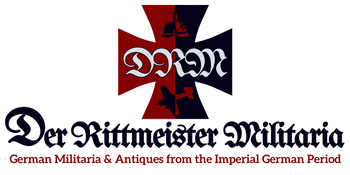Mecklenburg-Strelitz (Großherzogtum Mecklenburg-Strelitz)
CLICK HERE FOR ALL PRODUCTS RELATED TO MECKLENBURG-STRELITZ
Basic Information
- Official Name: Grand Duchy of Mecklenburg-Strelitz (Großherzogtum Mecklenburg-Strelitz)
- Capital: Neustrelitz
- Motto: "Per aspera ad astra" (Through hardships to the stars)
- Established: 1815 as a Grand Duchy (earlier as a Duchy in 1701)
- Dissolution: Transitioned to the Free State of Mecklenburg-Strelitz in 1918 following the abdication of Grand Duke Adolf Friedrich VI.
-
Key Symbols:
- Coat of Arms: A crowned bull’s head on a golden field, representing the Mecklenburg dynasty.
- Flag: Blue, yellow, and red horizontal stripes.
Geographical Overview
-
Location:
Located in northern Germany, bordered by Mecklenburg-Schwerin to the west, Prussia to the south, and the Baltic Sea to the north. -
Size:
One of the smallest states in Imperial Germany, with predominantly rural areas and small towns. -
Land Features:
- Müritz Lake: The largest lake in Germany, a defining feature of the region.
- Mecklenburg Lake District: Known for its natural beauty and extensive water systems.
- Dense Forests: Rich in wildlife and used for hunting by the nobility.
Historical Timeline
-
Early Mecklenburg-Strelitz:
- 1701: Created as a duchy after the division of Mecklenburg between the Schwerin and Strelitz lines.
- 18th Century: Gained prominence through dynastic marriages, including Queen Charlotte of Britain (wife of King George III), who was born in Mecklenburg-Strelitz.
-
Grand Duchy Era (1815–1918):
- 1815: Elevated to a Grand Duchy during the Congress of Vienna.
- 1871: Became part of the German Empire while retaining its internal autonomy.
-
Decline (1918):
- The abdication of Grand Duke Adolf Friedrich VI during the German Revolution ended the monarchy, transitioning into the Free State of Mecklenburg-Strelitz.
Notable Rulers and Leaders
- Adolf Friedrich III (1708–1752): The first ruler of the duchy after its creation.
- Adolf Friedrich VI (1914–1918): The last Grand Duke, who tragically committed suicide in 1918 amid political and personal pressures.
Military and Political Strength
-
Military Contributions:
- Mecklenburg-Strelitz contributed small but well-trained regiments to the German Imperial Army.
- Known for its cavalry units, often stationed with larger Mecklenburg-Schwerin forces.
-
Political Role:
- Governed as a constitutional monarchy with representation in the Reichstag.
- Played a minor but supportive role in German unification under Prussian leadership.
Cultural Contributions
-
Architecture:
- Schloss Neustrelitz: The ducal residence, an elegant Baroque palace (later destroyed during WWII).
- Rheinsberg Castle: A picturesque estate associated with artistic gatherings.
-
Arts and Literature:
- The region was known for its preservation of folk traditions, including music and storytelling.
- Dynastic ties to Britain brought cultural exchange, influencing fashion, gardening, and the arts.
-
Education and Science:
- Focused on agricultural innovation, reflecting its rural economy.
- Supported early forestry conservation efforts in the Mecklenburg Lake District.
-
Cuisine:
- Known for hearty dishes like Rinderroulade (beef roulade) and Plum Cake.
- The region’s lakes made smoked fish a specialty.
Fall of Mecklenburg-Strelitz
-
World War I (1914–1918):
- Economic strain and food shortages affected the rural population.
-
German Revolution (1918):
- Grand Duke Adolf Friedrich VI abdicated, ending the monarchy. The state merged with Mecklenburg-Schwerin in the Free State of Mecklenburg in 1934.
-
Post-WWII (1945):
- Incorporated into East Germany before reunification as Mecklenburg-Western Pomerania.
Connections to Products
-
Cultural Artifacts:
- Items tied to Queen Charlotte of Mecklenburg-Strelitz, such as commemorative coins or portraits.
- Miniatures of Neustrelitz Palace and other historic buildings.
-
Military Memorabilia:
- Medals and badges from Mecklenburg-Strelitz’s military contributions.
- Uniforms and cavalry equipment reflecting its regiments.
-
Historical Documents:
- Royal correspondence, particularly with British royalty, showcasing its international ties.
- Maps and records detailing the Grand Duchy’s governance.
-
Tourism and Natural Items:
- Memorabilia featuring Müritz Lake and the Mecklenburg Lake District.
- Postcards and guides to the region’s hunting and fishing traditions.
-
Culinary Memorabilia:
- Recipes and tools for preparing traditional Mecklenburg-Strelitz dishes.
- Local smoked fish packaging and vintage advertisements.









